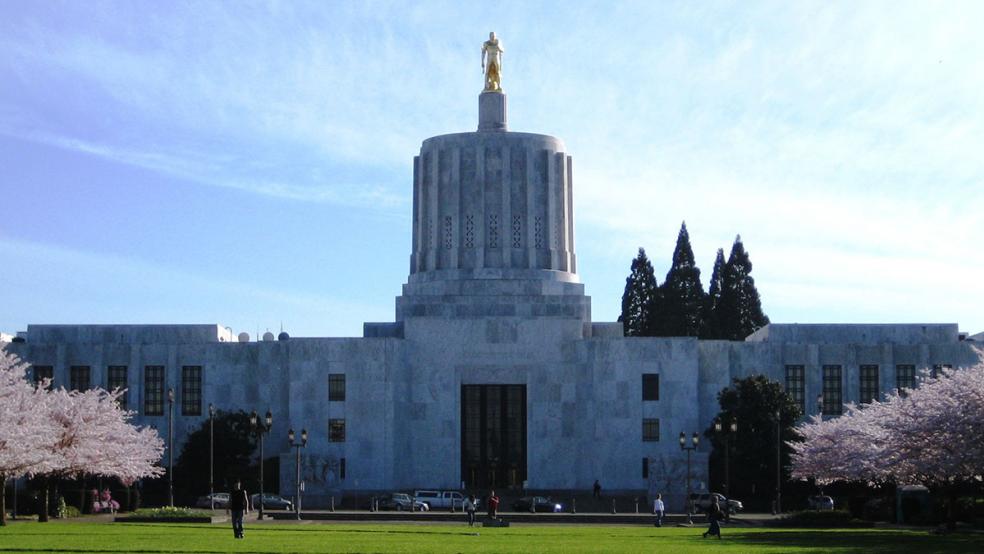Bucking resistance from a Republican Congress and the Trump Administration, Oregon has become the first state to launch a program requiring private employers to either offer their own 401 (k) savings accounts or automatically sign up workers for state-run individual retirement accounts.
Many Americans have little or no retirement savings, with one study showing the median savings for households near retirement age is a mere $17,000. In Oregon alone, more than one million workers don’t have a retirement savings option through their jobs, making it difficult for them to save on a regular basis.
Related: How the Government is Making It Harder for You to Retire
The so-called OregonSaves program began over the weekend with a modest pilot project and will gradually be extended to all businesses by mid-2020. Employees are automatically enrolled in the savings program unless they choose to opt out, and their contributions of up to 10 percent of their pre-taxed income are made through automatic payroll deductions.
The Roth IRAs that workers invest in are “portable” and stay with them throughout their careers, regardless of where they work. Employers are not responsible for contributing to the retirement accounts, and their primary responsibility is passing along information about the program and handling payroll deductions.
This mandatory program strongly encourages Americans to begin saving for their retirement so that they are not solely dependent on their relatively modest Social Security benefits -- a plan championed originally by the Obama administration, which is spreading to other states.
Illinois, California, Connecticut and Maryland have all passed similar “auto-IRA programs, and are scheduled to begin phasing them in next year or by early 2019 at the latest.
Related: 5 Tips for Easing Into Retirement on Your Own Terms
The Obama administration’s Secure Choice Retirement Savings Plan required businesses with five or more employees to either offer their own 401(k) savings accounts or automatically sign up workers for state-run retirement accounts, such as the Roth IRA.
The 401(k) plans, authorized under the IRS code, are employer-sponsored deferred income plans in which employers typically match their employees’ pre-tax contributions. Any investment gains realized within the plan are not taxed by the Internal Revenue Service until the employee begins to make withdrawals, typically upon retirement.
Roth IRA’s are set up directly between an individual and an investment firm, without the employer’s involvement, and employees’ after-tax income is used to fund the investments. Employees are given considerably more flexibility in deciding where their money is invested than under a 401 (k), but they are also required to pay a fee for administrating their accounts.
In the case of the Oregon plan, employees must pay an Oregon Retirement Savings Board handling their accounts and overseeing the investments an annual service fee of 1.05 percent of their investments. Employee contributions to their IRAs would begin at an initial rate of five percent of their compensation and gradually ratchet up to a maximum of 10 percent. Employees who do not wish to enroll have 30 days in which to drop out of the program.
Related: 4 Times It May Make Sense to Take Social Security Early
The AARP, the leading senior citizens’ advocate, has strongly supported this approach, saying the state plans offer a needed alternative to the 55 million Americans who don’t have any retirement savings accounts through their jobs.
However, critics of this approach -- including the Investment Company Institute, Insured Retirement Institute, and Financial Services Institute Inc. — have warned that this approach will result in an unwieldy patchwork of the plans nationwide. They also complained that this new approach would place private-sector retirement plans at an economic disadvantage and expose investors to the risk of having their savings badly managed by the state, according to Investment News.
Congressional Republicans and the Trump administration agree with the financial industry critics and have moved to block Obama’s policies to encourage other states to adopt auto-enrollment retirement investment programs.
Related: Aging in Place: 5 Things You Have to Do to Retire in Your Own Home
In May, the Senate voted 50 to 49 to approve a House-passed bill that blocked implementation of the Obama policy and sought to discourage other states from joining with Oregon and the states that have already passed legislation.
“What the [state retirement plans] really add up to is more government at the expense of the private sector and American workers,” said Senate Majority Leader Mitch McConnell (R-KY). “They would provide government-run retirement plans with a competitive advantage over private sector workplace plans.”
Democrats who favored the new approach complained that McConnell and other Republicans were largely doing the bidding of Wall Street and financial investment companies that fear new competition.
Some experts predict that the legality of programs like that of Oregon’s will eventually be challenged in court, Investment News reports. Several other states, including Washington, New Jersey, Massachusetts and Vermont have passed legislation creating other types of state retirement programs.





